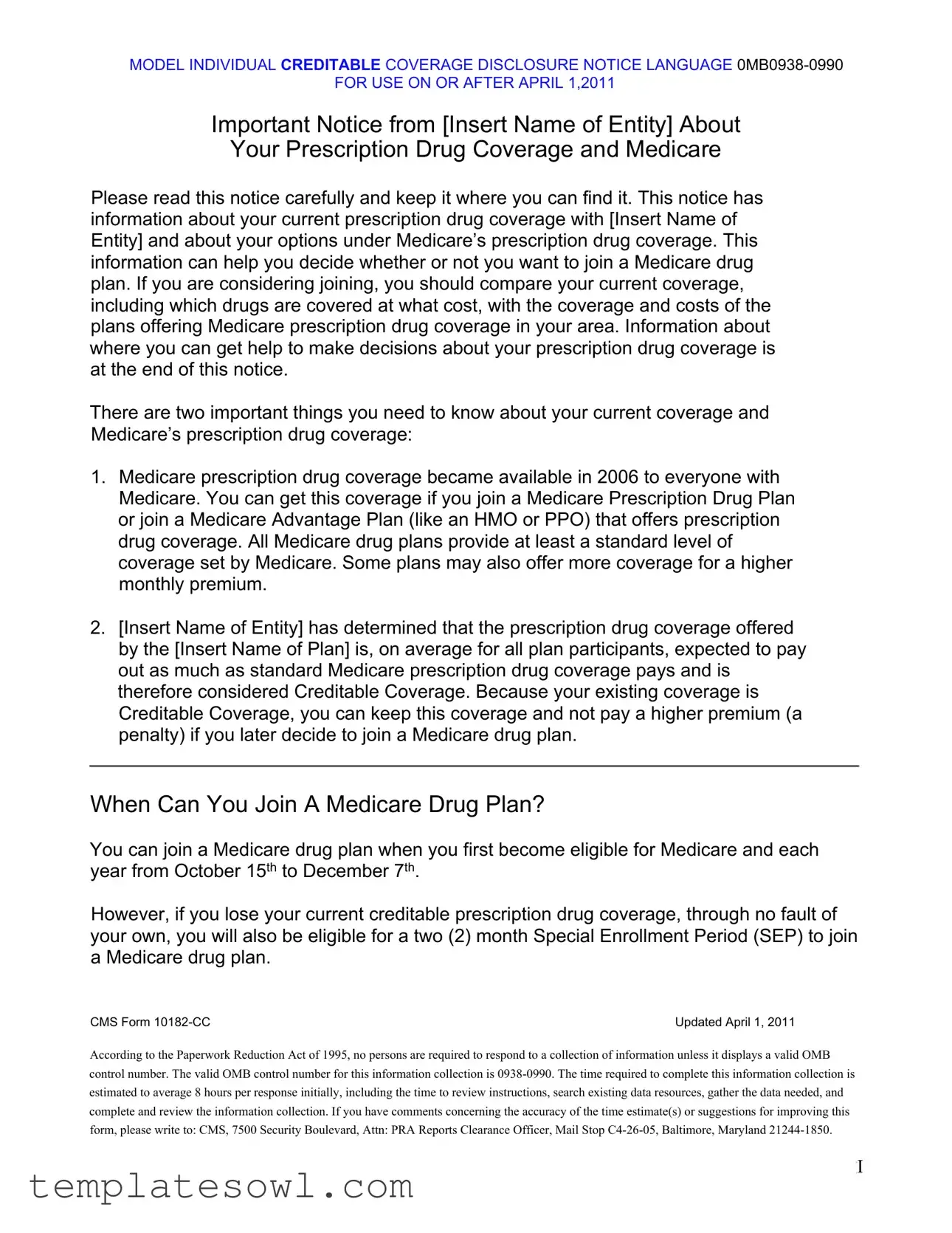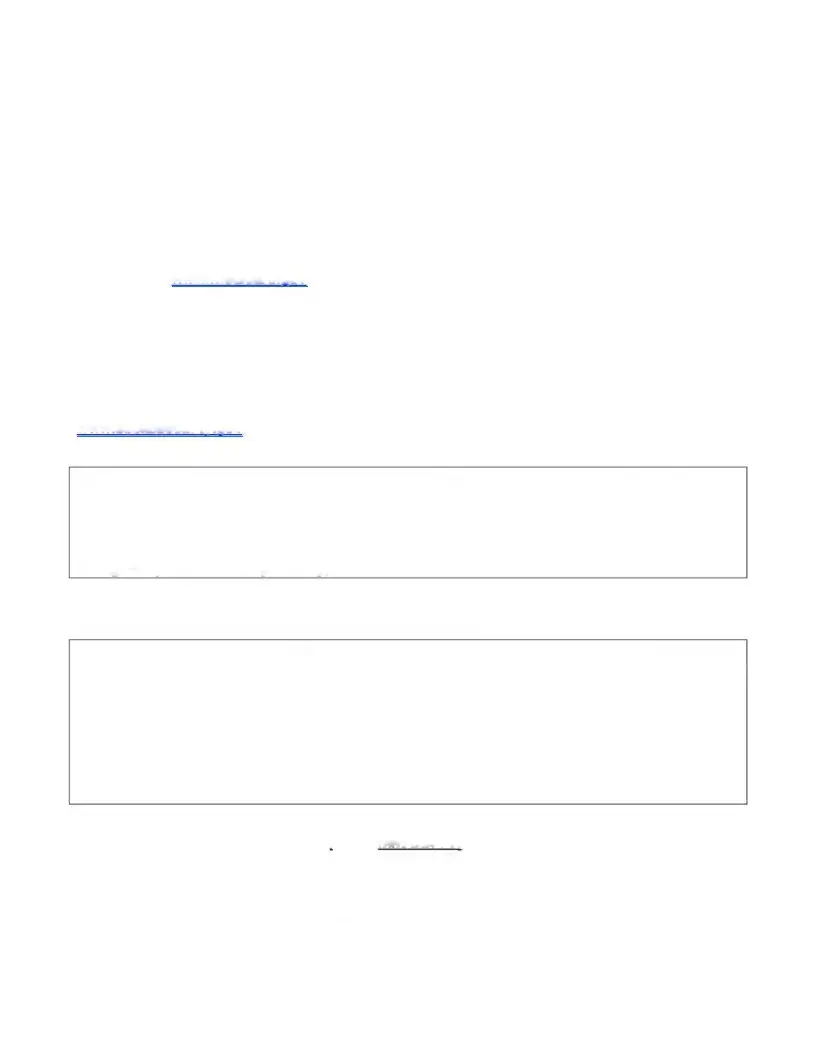MODEL INDIVIDUAL CREDITABLE COVERAGE DISCLOSURE NOTICE LANGUAGE 0MB0938-0990 FOR USE ON OR AFTER APRIL 1,2011
For More Information About Your Options Under Medicare Prescription
Drug Coverage...
More detailed information about Medicare plans that offer prescription drug coverage is in the “Medicare & You” handbook. You’ll get a copy of the handbook in the mail every year from Medicare. You may also be contacted directly by Medicare drug plans.
For more information about Medicare prescription drug coverage:
•Visit www.medicare.gov
•Call your State Health Insurance Assistance Program (see the inside back cover of your copy of the “Medicare & You” handbook for their telephone number) for personalized help
•Call 1 -800-MEDICARE (1-800-633-4227). TTY users should call 1 -877-486-2048.
If you have limited income and resources, extra help paying for Medicare prescription drug coverage is available. For information about this extra help, visit Social Security on the web at www.socialsecuritv.gov, or call them at 1-800-772-1213 (TTY 1-800-325-0778).
Remember: Keep this Creditable Coverage notice. If you decide to join one of the Medicare drug plans, you may be required to provide a copy of this notice when you join to show whether or not you have maintained creditable coverage and, therefore, whether or not you are required to pay a higher premium (a penalty).
[Optional Insert - Entities can choose to insert the following information box if they choose to provide a personalized disclosure notice.]
Medicare Eligible Individual’s Name: [Insert Full Name of Medicare Eligible Individual]
Individual’s DOB or unique Member ID: [Insert Individual’s Date of Birth], or [Member ID
]
The individual stated above has been covered under creditable prescription drug coverage for the following date ranges that occurred after May 15, 2006:
From : [___________ ] To : [___________ ]
From: [___________] To: [___________]
Date: |
[___________] |
Name of Entity/Sender: |
[___________] |
CMS Form 10182-CC |
Updated April 1, 2011 |
According to the Paperwork Reduction Act of 1995, no persons are required to respond to a collection of information unless it displays a valid OMB control number. The valid OMB control number for this information collection is 0938-0990. The time required to complete this information collection is estimated to average 8 hours per response initially, including the time to review instructions, search existing data resources, gather the data needed, and complete and review the information collection. If you have comments concerning the accuracy of the time estimate(s) or suggestions for improving this form, please write to: CMS, 7500 Security Boulevard, Attn: PRA Reports Clearance Officer, Mail Stop C4-26-05, Baltimore, Maryland 21244-1850.




